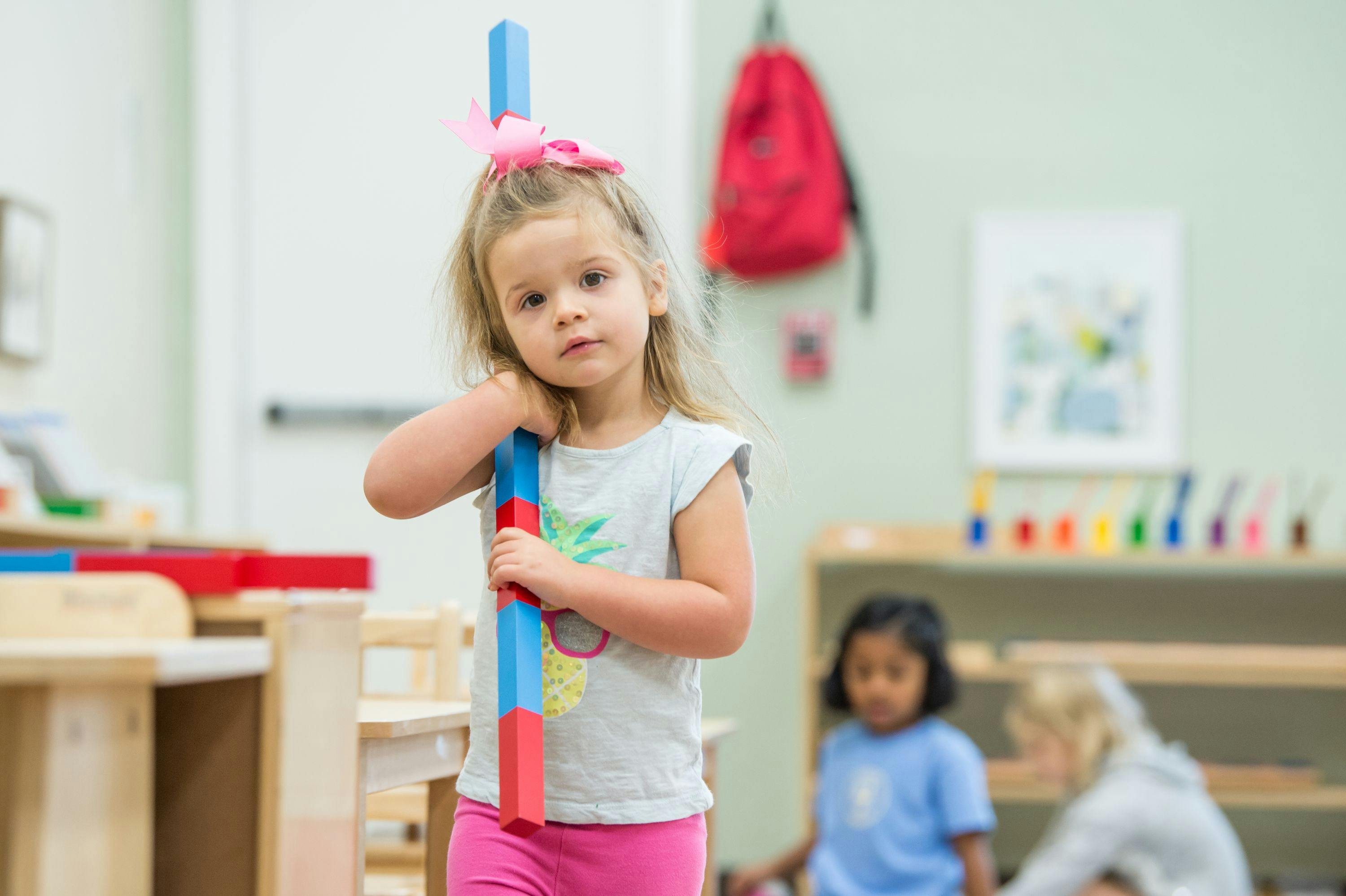Montessori Material Spotlight: Number Rods
Montessori learning environments take a unique approach to teaching math: The carefully designed math materials take an abstract concept, such as “length,” and make it into concrete materials that children can hold in their hands. The Number Rods help a child begin his understanding of the numbers 1 through 10
The Guidepost Team
Montessori learning environments take a unique approach to teaching math: The carefully designed math materials take an abstract concept, such as “length,” and make it into concrete materials that children can hold in their hands. The Number Rods help a child begin his understanding of the numbers 1 through 10.
What are Number Rods?
The Number Rods expose students to the concept of measurement. Instead of looking at two rods and saying, “this one is longer,” now the student is able to actually quantify exactly how much longer. While this might seem like a rather intuitive skill, it actually takes a fair bit of practice to be able to judge and compare quantities. The Number Rods are introduced to students of about four years of age, once the student has mastered the Red Rods and has expressed interest in the Number Rods.
A set of Number Rods consists of ten colored rods, divided into equally-sized red and blue sections. The length of the rods progresses linearly, with the second rod being twice the length of the first, the third rod three times the length of the first, etc.
Major Purposes
Working with the Number Rods teaches children to quantify measurement. Instead of noticing that 10 is longer than 1, the child can see that 10 is precisely ten times longer. They learn to ask not just “is it longer?” but, “How much longer is it?”
The Number Rods also help children learn the names of numbers and their sequence and learn to correctly associate between the spoken number and its quantity. Children grow to understand that each rod represents a unique quantity and that each number is represented by a single object as a whole, separate from others. Later on, students work with another material, the Number Rods and Cards, which link the symbol for a number to the physical quantity.
Number Rod Activities
Number Rods are a wonderfully flexible material. They can be used in several different ways, depending on the individual student’s level of mastery. The student can name the rods by their length and count the colored sections, or, given the name of a specific rod, a student can select that rod out of a group. A student can identify the rods in sequence or from a randomized order. The first type of exercise reinforces the sequence of the numbers, while the second kind strengthens a child’s judgment of individual quantities. These exercises can also be done from a distance, so the child can practice retaining information in his memory. For example, a Guide might ask the student to walk across the classroom to retrieve a certain rod.
During the activities, a child’s developing internal sense of length is a strong source of error control: While ordering the rods, it quickly becomes clear whether there’s a mistake. The predictable red-blue color pattern might be disturbed, or there could be a gap in the staircase. Either way, this gives the student a chance to analyze and solve the error independently, before seeking help from an adult.
Another exercise that can be done with the Number Rods is making tens using the smaller rods. The child discovers many different ways of making tens: unconsciously, he is learning patterns and combinations that he will use later on when doing addition.
Learning to think mathematically is a challenging process involving multiple layers of abstraction. The Number Rods are a vital step in the process of preparing students for working with numbers in a more abstract sense. After mastering the Number Rods, a student is ready to move on to activities such as the Spindle Boxes to further hone their quantitative understanding.
The Guidepost Team
The Guidepost Team is a group of writers and educators dedicated to helping demystify all things Montessori.
Sign up for our newsletter
Get started with our community today! Sign up for resources.
